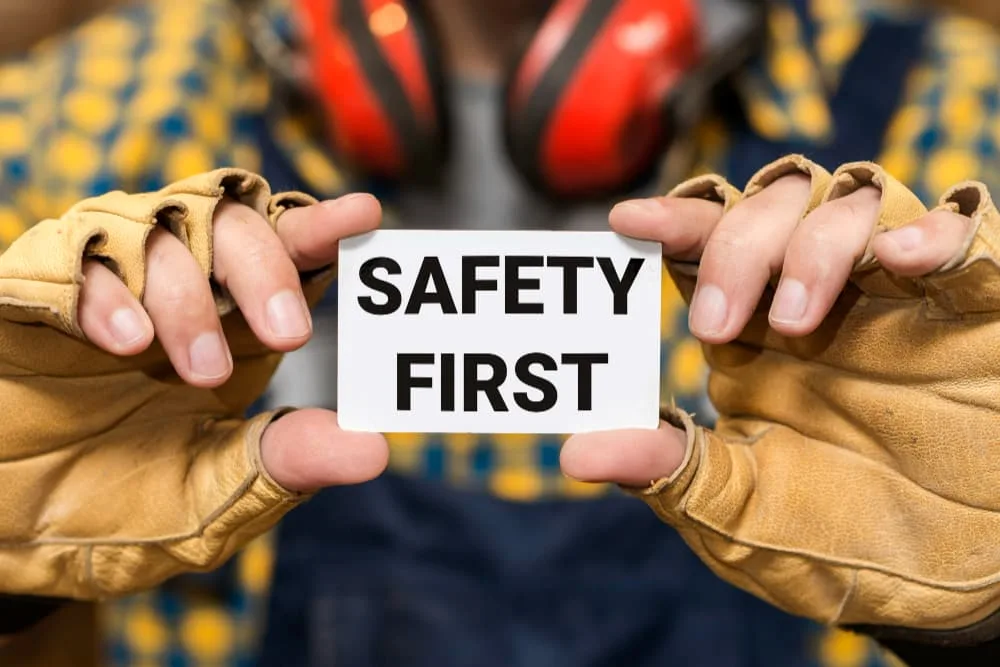Observed annually in India during the first week of March, National Safety Week aims to raise safety awareness across all industries to help prevent work-related injuries and illnesses. This year’s (2024) National Safety Day/Week theme is “Focus on Safety Leadership for ESG Excellence.” This will create work cultures where care for people and stewardship of shared resources become integral to business operations, fulfilling the vision of superior Environment, Social responsibility, and Governance (ESG) performance. By hopping organizations will take all necessary steps to make safety leadership a collective priority across industries.
There is no better time for organizations to reenergize their safety programs. Let’s explore the origins of National Safety Week and how businesses can fully embrace its objectives to achieve enduring safety excellence.
The History and Goals of National Safety Week
India’s National Safety Council established National Safety Week in 1972 to commemorate the founding of the organization four decades prior. It carries the council’s long-standing vision to stimulate safety consciousness and build capabilities through training, consulting, auditing, and promotional efforts nationwide.
Key goals of celebrating National Safety Week include:
• Renewing commitment to occupational safety at organizational leadership levels.
• Training employees on preventing known hazards in their workplace.
• Following the highest safety standards rather than just minimum legal compliance.
• Encouraging two-way dialogue between management and workers on safety practices.
• Motivating staff involvement in safety programs is an essential responsibility.
• Promoting technology adoption and automation to reduce safety risks.
• Instilling safety-first values both on and off the job.
• Generating creative awareness-building events and contests for employee participation.
• Recognizing teams and individuals demonstrating safety dedication all year long.
This annual spotlight on safety aims to inspire substantive culture change, not just a short burst of lip service. Work must get done properly each day in a manner that safeguards workers to the maximum reasonable extent.
How Leaders Can Cultivate a Culture of Safety!
Gaining and demonstrating commitment from organizational leadership is indispensable for National Safety Week momentum within a company. When upper management values safety as an operating priority equal to productivity or quality, real traction emerges at operational levels.
Leaders show commitment through deeds like:
• Issuing official safety policy statements reconfirming their expectations.
• Visibly investing staff time and capital into safety initiatives.
• Participating actively in events they ask employees to engage in.
• Empowering safety managers with authority and budget.
• Tying bonuses for themselves and site managers to leading safety indicators.
• Never overlooking unsafe behaviors or conditions for expediency.
• Speaking openly about prioritizing lives over schedule pressures.
Without such signals from the top, cynicism creeps in that profits matter most. Employees need tangible proof that their safety truly counts to give their full discretionary effort toward building a secure work environment benefitting all.
Inspiring Safety Champions Through Creative Strategies!
When employees feel fulfilled protecting team members versus resentfully obedient, the seeds of culture change grow. Strengthening a safety culture requires passionate evangelists within the ranks willing to educate and motivate coworkers. But passion seldom materializes through strict rules alone. Creative influence strategies during National Safety Week like the following help spark intrinsic inspiration:
• New hire onboarding immerses rookies in company safety history and priorities.
• Safety mentor programs facilitate experienced employees coaching newer peers.
• See Something, Say Something” campaigns encourage voicing safety concerns.
• Digital badge rewards recognize those spearheading higher safety engagement.
• Walls of honor celebrate perfect safety records year after year.
• Creative poster/video contests allow artistic displays of safety commitment.
• Voluntary reporting of misses and hazard observations without reprisal.
• Annual safety perception surveys give anonymous feedback on progress.
• Forming workplace safety committees ensures all roles contribute insights.
The Power of Sharing Safety Success Stories
Evidence of lives saved and serious incidents prevented through safety measures makes compelling listening. Seeking out and publicizing such stories enterprise-wide generates inspiration along with proof that lost time accidents serve no one’s interests.
For example, highlighting a forklift operator who spotted and averted an imminent dangerous situation makes him feel like a hero whose skill mattered instead of merely another invisible worker. This fosters pride in safety contributions across the organization.
Simultaneously, transparency around serious incident investigations, corrective actions, and disciplinary outcomes reassures people that unsafe behaviors carry consequences. However, the tone should remain oriented toward learning rather than punishment.
The Journey Towards a Self-Sustaining Safety Ecosystem
The ultimate goal is embedding safety so profoundly across the workplace that dramatic campaigns become unnecessary. But reaching that nirvana takes years of perseverant leadership focus, role modeling, training, process integration, measurement, and necessary course corrections.
National Safety Week serves as an annual opportunity to refocus on the journey ahead. It offers a checkpoint to gauge progress and recalibrate efforts through refreshed commitments. Maintaining momentum over time until safety consciousness perseveres as an integral aspect of company culture remains paramount.
With dedicated leadership and passion flowing from all corners of the organization, the seeds planted during National Safety Week can bloom into a self-sustaining ecosystem that cares for its people as much as its profits. There is no endpoint, only continual improvement towards ever more secure and nurturing worksites benefitting all involved.

